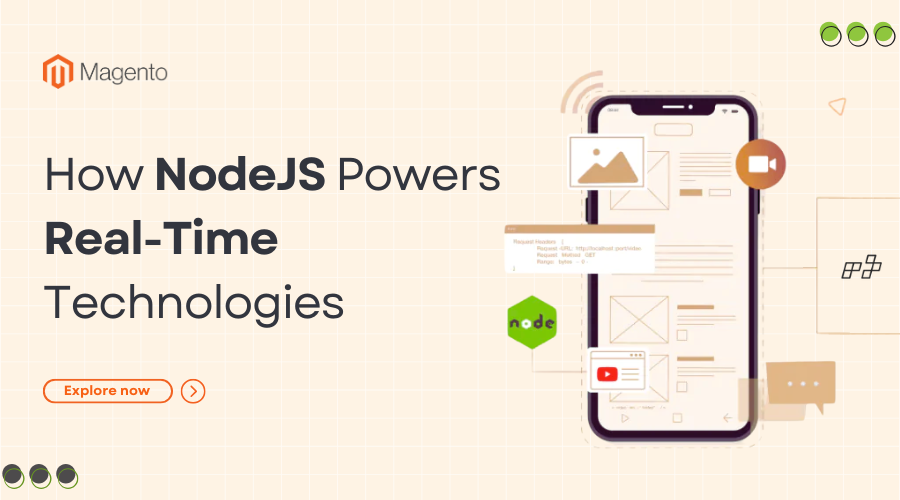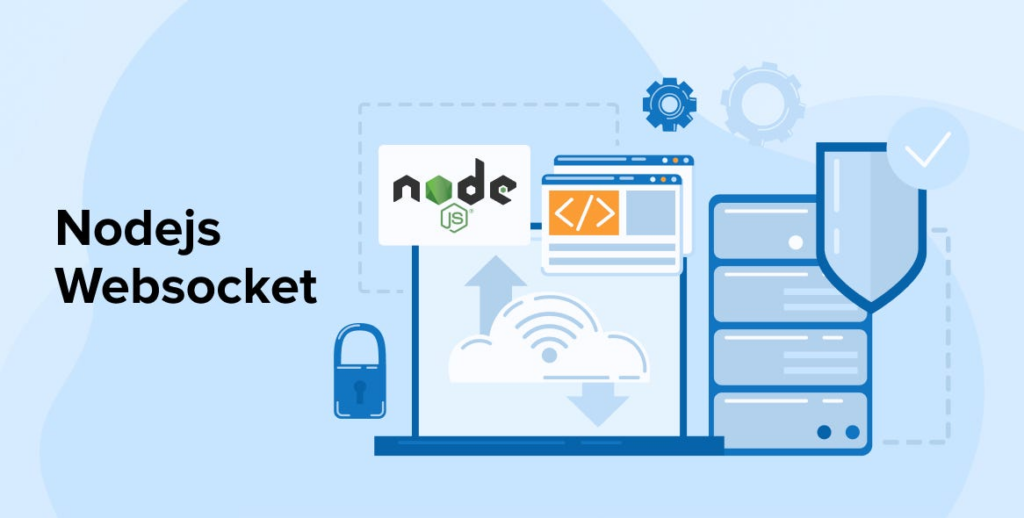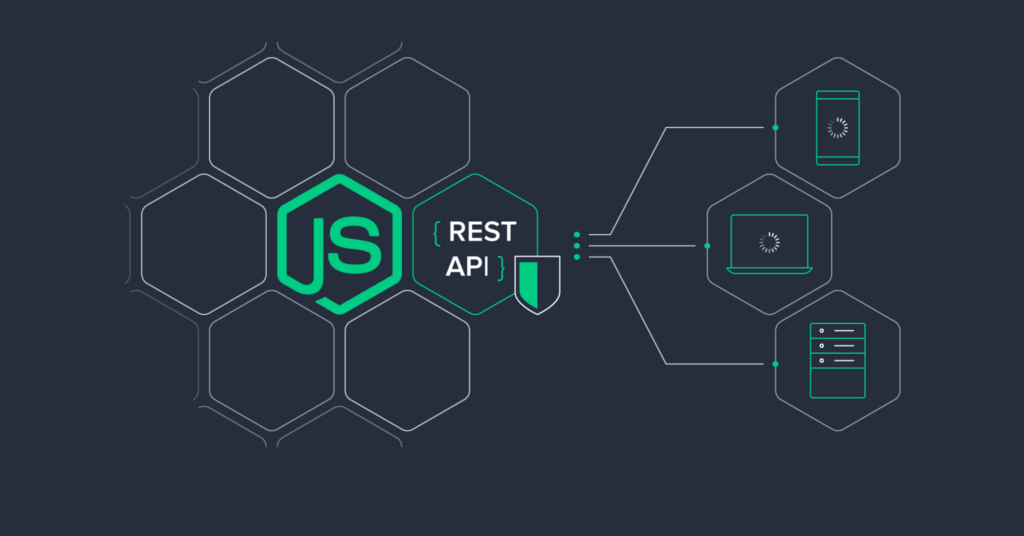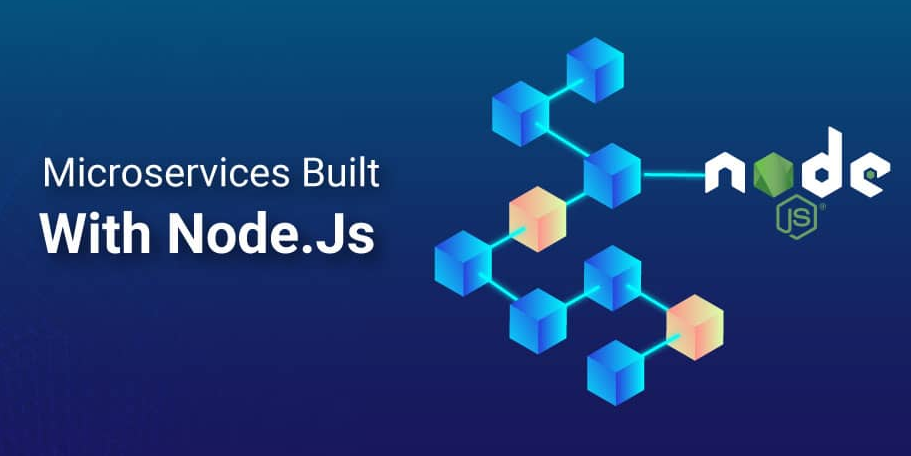
Real time technologies have changed the way we go about interacting with applications. Whether it is a live chat system, online multiplayer games or simply collaborative tools we use in our day to day work, Node.js is the frontrunner that powers up all these technologies.
If you’ve been writing code for even just a bit of time, you should already be familiar with the power of Node.js and what it can bring on the table for you but do you actually know how using Node.js can supercharge your real-time applications as well?
Here are some ways Node.js power up these applications and therefore still remain the go-to for building live, real time applications.
Table of Contents
NodeJS and the real-time technologies – Key insights
Node.js plays a crucial role in the development of real-time applications, thanks to its event-driven, non-blocking architecture. Real-time technologies, such as live chat applications, collaborative editing tools, online gaming platforms, and live streaming services, demand seamless, instantaneous data exchange between clients and servers. Node.js, with its asynchronous nature, ensures minimal latency, making it an ideal choice for these applications.
<block>

<block>
By leveraging WebSockets, Node.js enables bidirectional communication between the client and server without the need for continuous HTTP requests. This significantly reduces overhead, ensuring efficient data transmission. Additionally, the ability to process streams in real time, integrate with GraphQL subscriptions, and implement the Pub/Sub pattern further solidifies Node.js as a preferred backend for real-time systems.
Whether it’s a stock market tracker updating prices every second or a multiplayer game synchronizing movements across devices, Node.js ensures high performance and responsiveness, making modern real-time applications more robust and scalable.
How NodeJS powered real-time technologies?
1. A non blocking and event driven architecture
Node.js at its core operates at a non-blocking and event driven architecture which is also fundamental to any real time applications.
Unlike the old fashioned request-response cycles, Node.js event loop can handle multiple concurrent connections without creating new threads which ensures less memory and overall less resource is utilized. It also reduces the complexity of the entire system.
Now let’s try to connect this with a real world example!
Imagine you are building a live chat application, Node.js will make sure that sending and receiving messages is fast despite the fact there might be thousands of users online and using your application for chatting at the same time.
2. WebSocket integration
Websocket implementation in Node.js today is easier than ever, especially with a library like Socket.io which is a protocol that allows two directional communication between clients and servers which is needed for building any real time features like chat, collaborative editing or instant notifications.
<block>

<block>
Once again, the old HTTP request model is one way and requires multiple connections to maintain a conversation while on the flip side, Websockets give birth to only one connection that is persistent throughout.
All this entire setup when combined provides the ability to both the client and server to exchange messages at any time of the day.
3. Real time data flow
Our real time applications demand constant communication between clients and servers so messages can be updated without any delay or blocking our main thread. Since Node.js has async I/O operations, that makes it a perfect candidate for managing that kind of data streams.
Node.js stream module provides us with the facility to process data as they are coming in instead of waiting for the entire data to arrive first.
One way to think about this is a YouTube video!
When you’re watching an hour long video, your browser downloads that video and then you get to watch it; however we don’t wait for the entire video to finish downloading. Whatever part that’s just been downloaded is sent to us to watch which saves us a great amount of time and provides us with the user experience all of us are after.
4. Support for REST and GraphQL APIs
<block>

<block>
Everyone is already aware of REST API but did you know that GraphQL too is compatible with node? Since that is the reason, it makes Node.js a perfect backend for real time applications.
You can very easily have GraphQL subscriptions for live updates in apps like sports scoreboard.
GraphQL subscriptions allow you to push the real time data that your server is receiving to the frontend using Websockets which is extremely useful on occasions where data changes frequently.
5. Pub/Sub pattern implementation
We have this very popular pub/sub pattern in a messaging paradigm which can be used by different parts of the system to communicate with each other in an asynchronous fashion. This pattern has three major components: publisher, subscriber and an optional broker.
The role of a publisher is to send messages that we technically call events but this publisher doesn’t know who will receive them.
The role of a subscriber is to receive messages from the publishers it subscribed to.
Broker is a message queue that deals with delivering messages from publishers to subscribers.
Not just software but even hardware or embedded systems make use of this and the most beneficial part of this is the fact that publishers and subscribers don’t need to know about one another making it easier for us to develop, maintain and of course later scale.
6. Microservices
<block>

<block>
Microservices simply means breaking down a huge application into smaller chunks making each easier to work on and adding new features to in the future.
In this architecture, each divided chunk is responsible for one very specific business function. In some cases each chunk has its own database for CRUD operations and also communicates with others using APIs.
Node.js is again an excellent fit for this due to its lightweight nature and non blocking I/O model as we’ve just discussed above.
Conclusion
Node.js has a lot to offer than what we see on the surface level and your interest in knowing more about this is what separates you from an average developer.
By familiarizing yourself with these functions that Node.js has to offer, you are not only going one step ahead in your backend journey but you’re also making your real time applications even more unique and interesting which you otherwise couldn’t.
Do you have any other ideas about how Node.js could be useful in enhancing the existing real time applications or in building the new ones? If so, please let us know.
Author bio
Hello, I am Shakir, and I wrote my first program back in 2013 when I was 12 because I wanted to make games. I eventually succeeded in creating one using just three technologies: HTML, CSS, and JavaScript. Back then, working with JavaScript was quite challenging due to the lack of modern tools like React, Vue, or Next.js. Since then, a lot has changed. After a few years, I started blogging and built a solid reputation in the community and wrote for some of the most popular blogs. You can find me on Linkedin here!












![[SALE OFF] Discount 30% All Premium Extensions On Christmas And New Year 2025 christmas-and-new-year-2025](https://landofcoder.b-cdn.net/wp-content/uploads/2024/12/christmas-and-new-year-2025-1-218x150.png)






